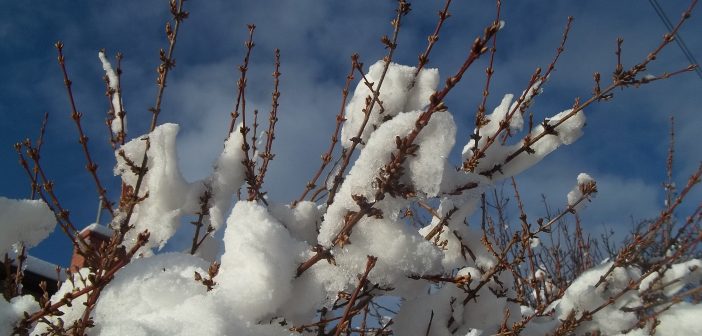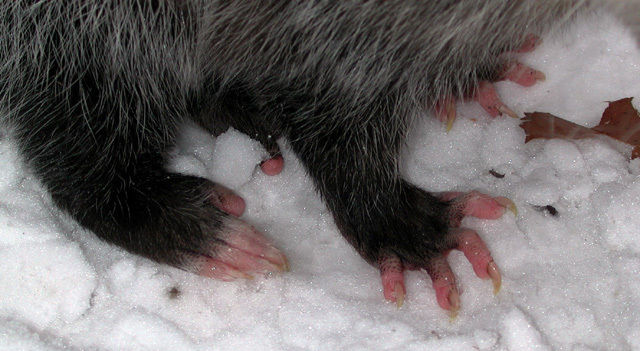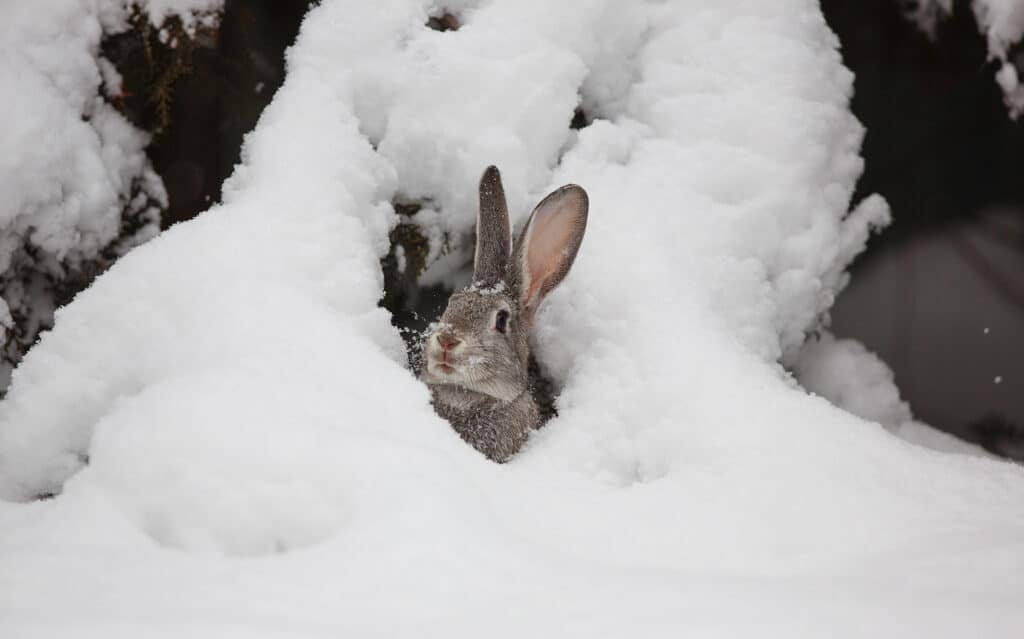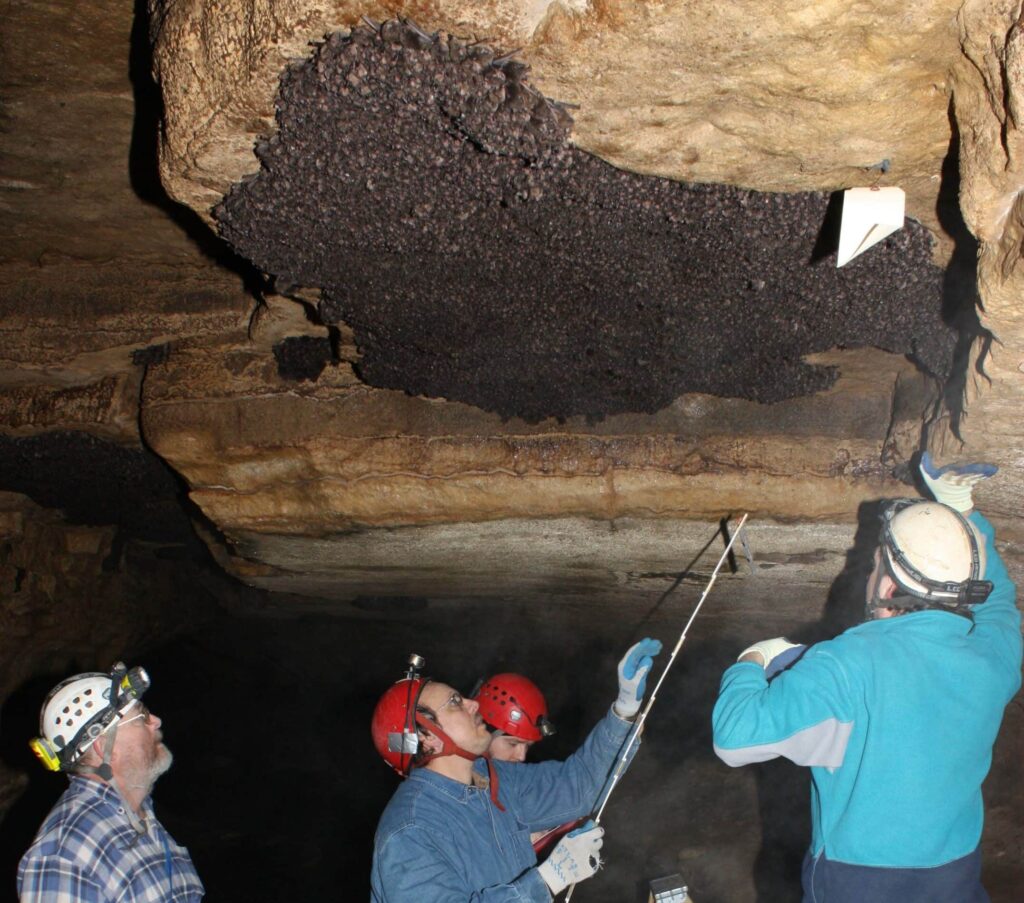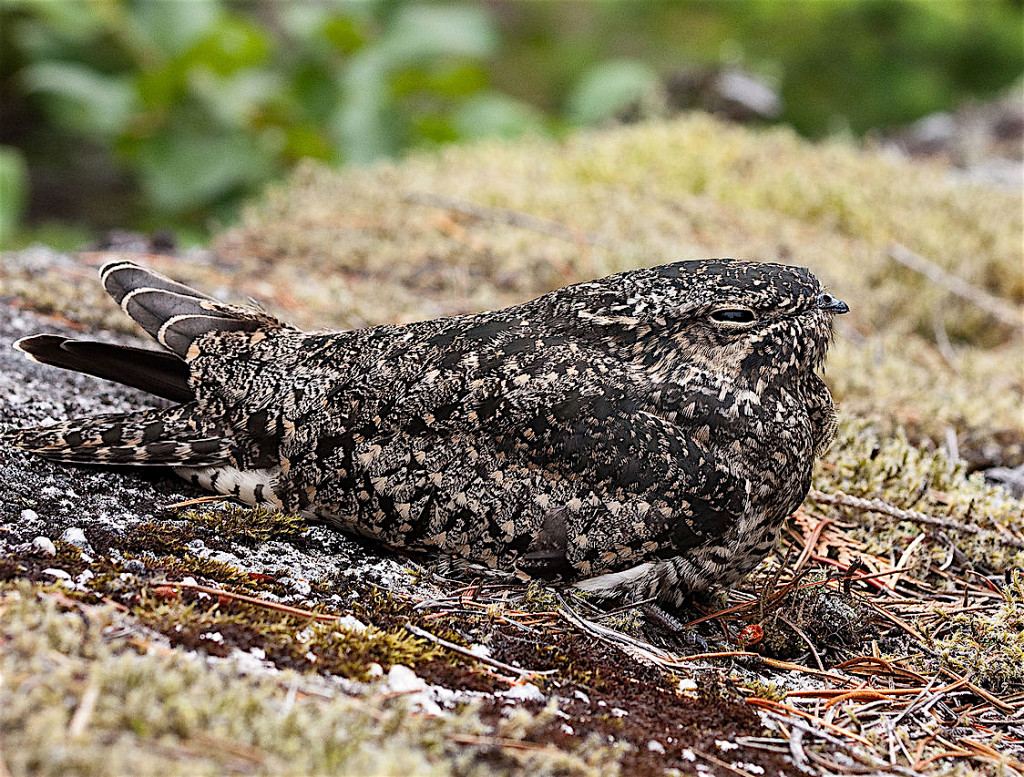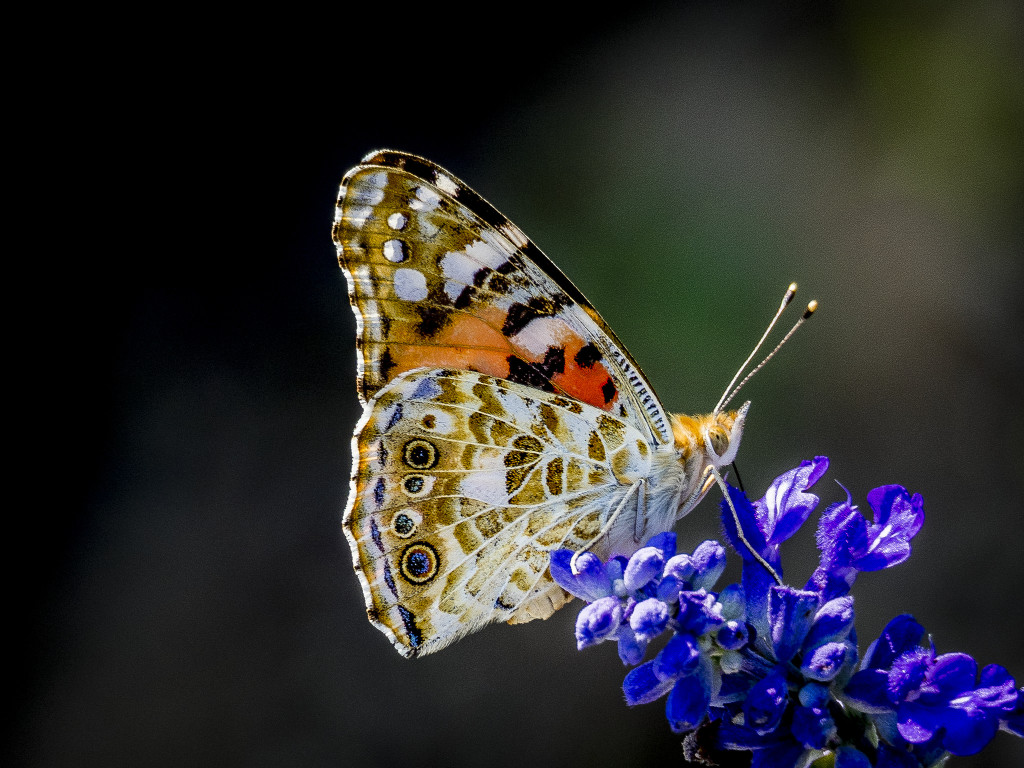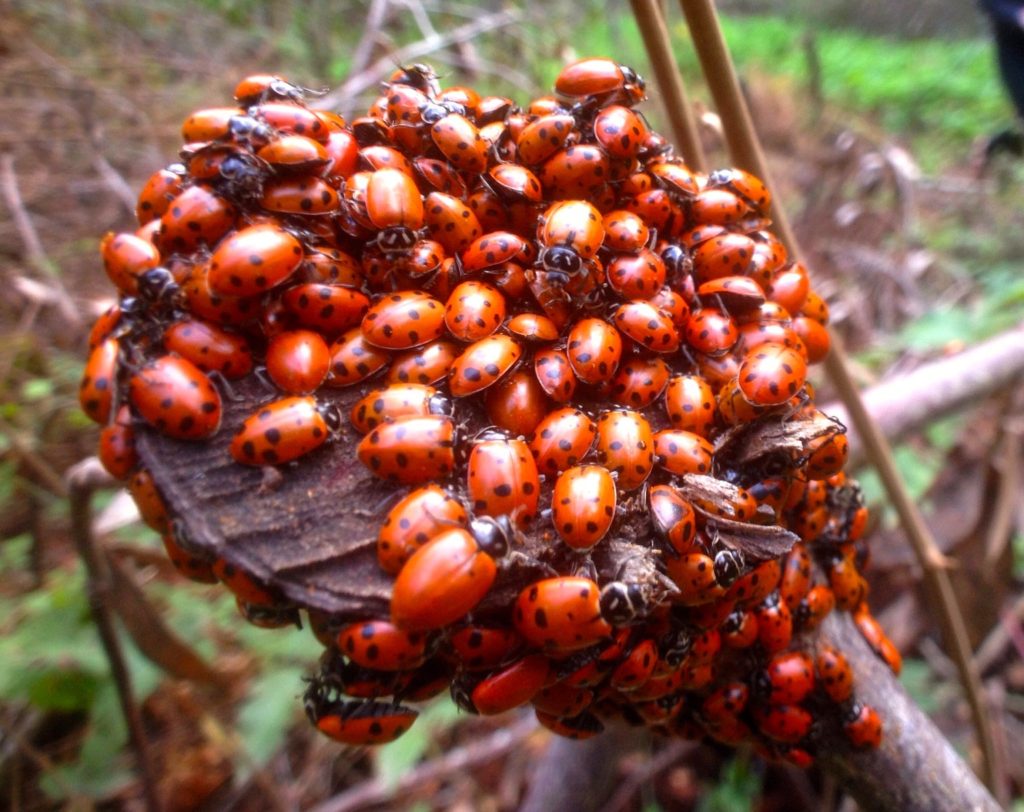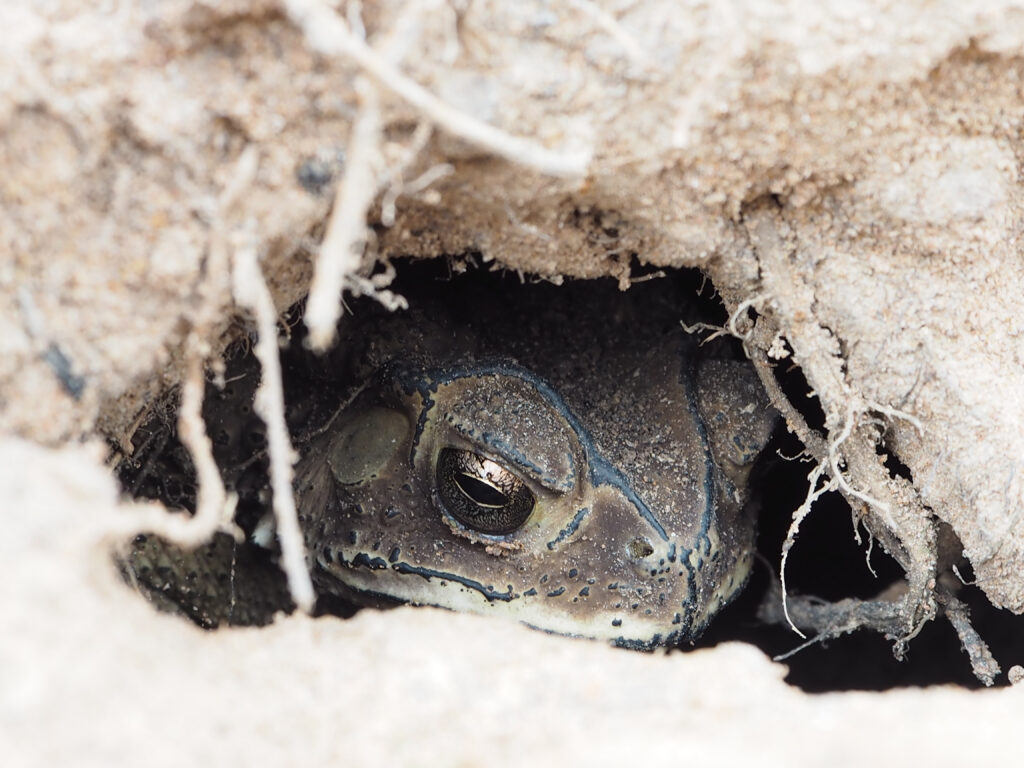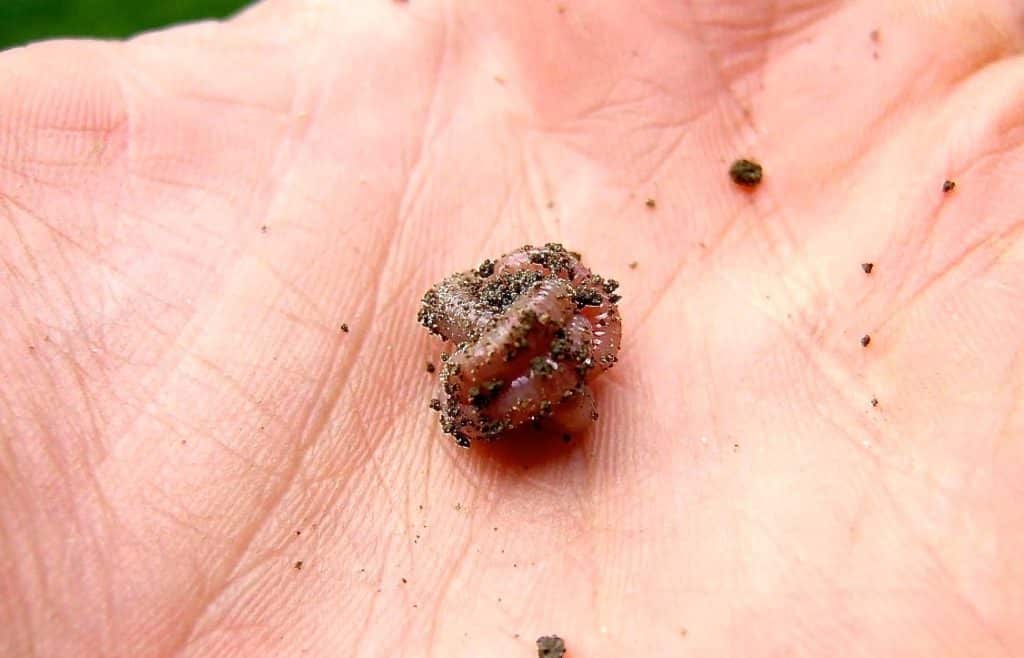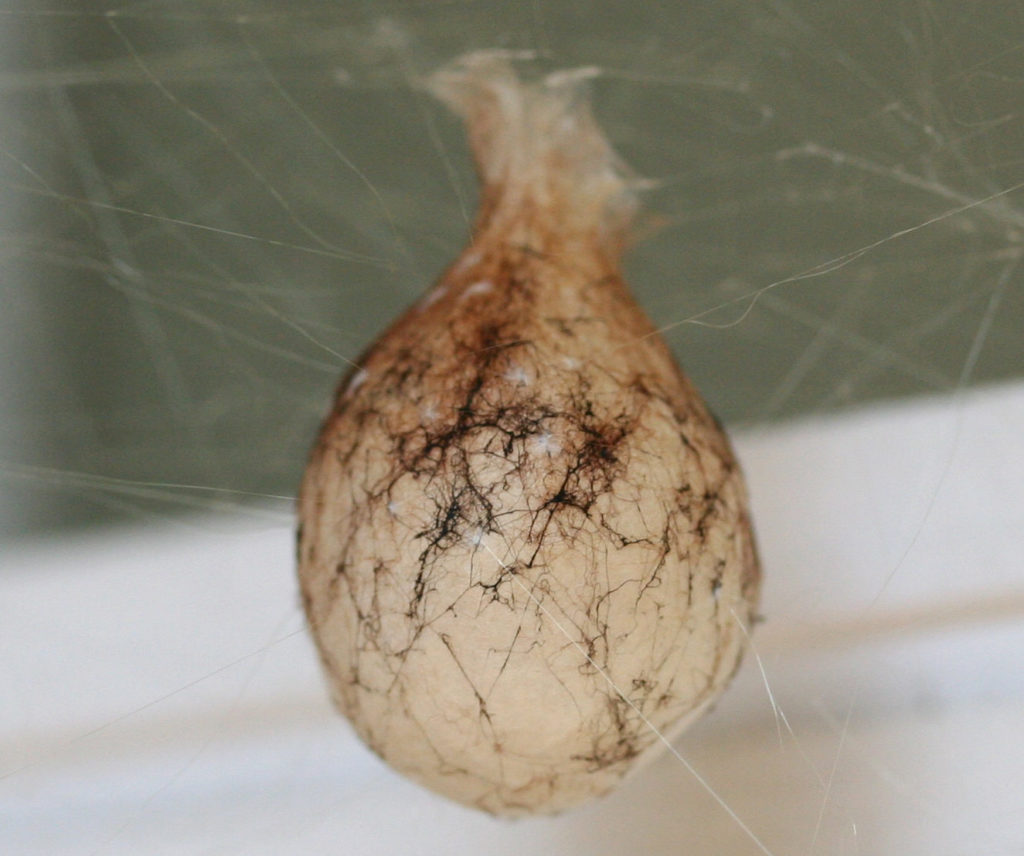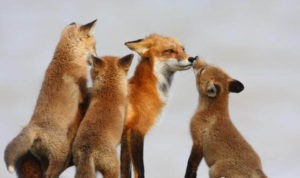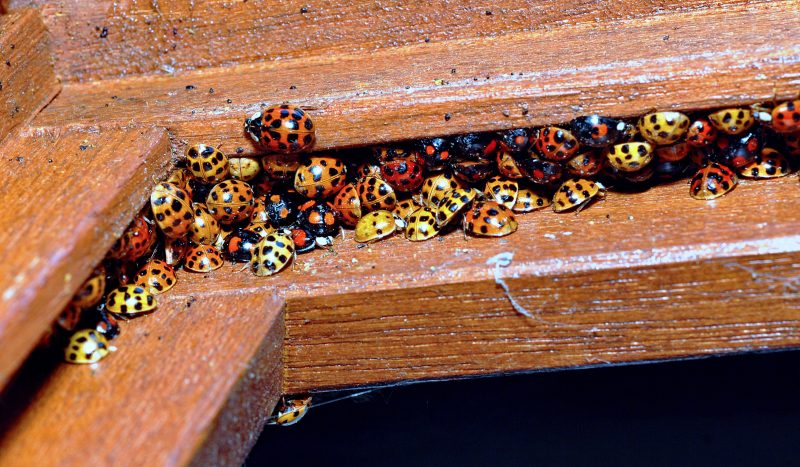Ever wondered how backyard wildlife survives winter weather? They disappear through the winter, and then, with the coming of spring, there they are again! Where did they go, and what did they do? Hibernate? Migrate? Die? The answers are: yes, yes, and yes! You’ll be amazed by wildlife’s solutions for enduring freezing temps and scarce food.
Mammals take on the challenge
Mammals are still around in the winter months, but they’re less active. You probably still see squirrels in your yard, and maybe small rodents under your bird feeders, but other urban mammals are spending their time in their nests. Not only do they do that to stay warm, but also to conserve energy. They eat a lot of food in the fall to put on extra body fat, which they’ll need to carry them through the long cold months.
Skunk, raccoon, opossum
Skunks and raccoons may stay in their dens for weeks at a time, and several females may share the same one. Den sites include abandoned buildings, rock crevices, abandoned burrows of other animals, brush piles, and tree hollows. All about the Striped Skunk • All about the Northern Raccoon
Winter is hardest on Virginia Opossums, as they lack a thick insulating coat of hair, and their tail and toes are bare. They don’t hibernate but, instead, sleep (almost always alone) in a den they’ve insulated with dry grass and leaves. When the weather warms a bit, they venture out to forage. All about the Virginia Opossum
Tree squirrels
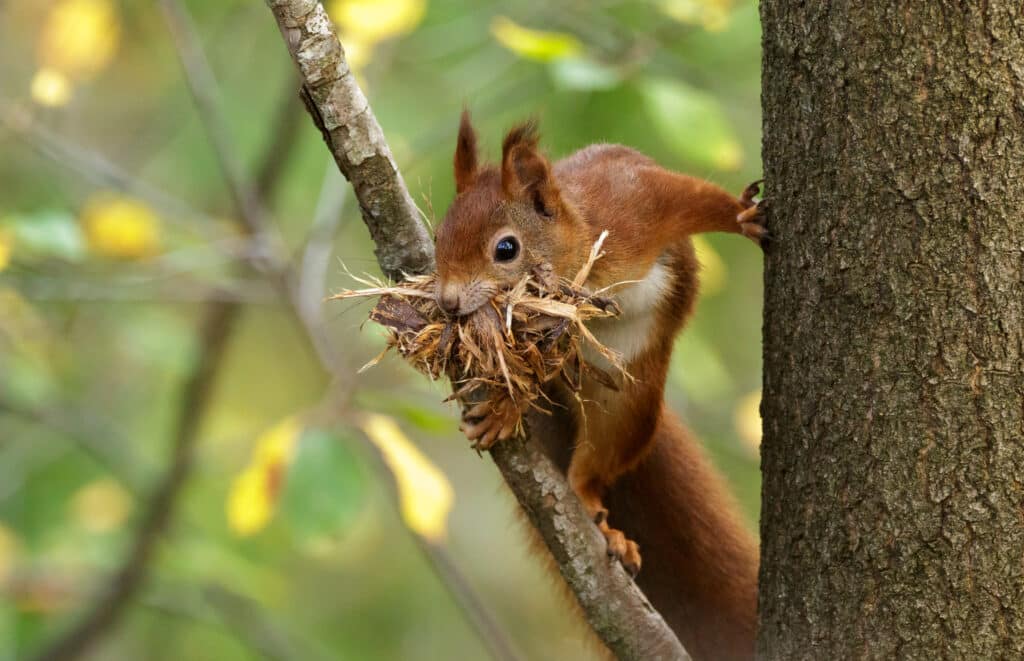
American Red Squirrel, Tamiasciurus hudsonicus, holding nest-building materials. (Hanna Knutsson / Flickr; CC BY-NC-SA 2.0)
American Red Squirrels, Gray Squirrels, and other tree squirrels spend much time sleeping (but not hibernating) in their nests. But, they do venture out for food, mainly the nuts they buried in the fall. If the weather is brutal, they may stay tucked in for several days. Most ground squirrels, such as chipmunks, hibernate.
When snow covers the ground • All about Fox Squirrels and Gray Squirrels
Cottontail rabbits
Cottontail Rabbits stay active in the winter. They’re herbivores, and the tender vegetation they fed on in warmer months is gone, which forces them to eat the woody parts of plants—bark, buds, and stems of trees and bushes—to the dismay of gardeners. They stay warm in brush piles, hollow logs, thick brambles, or the abandoned burrows of other animals.
Bats
Bats spend the winter in hibernation because most are insect-eaters, and insects aren’t available. Bat colonies hibernate in such places as unused buildings, old tree hollows, house attics, and caves. They awaken periodically to relieve themselves but don’t leave their shelter. By April, they’ve awakened and may venture out a bit as the weather gets warmer. By May, they’re fully active. All about bats
Birds stay or go
Birds are the year-round constant in our yards, although the species may vary with the seasons. Some, like the Northern Cardinals, Downy Woodpeckers, and chickadees, stay around, but many others migrate south. In fact, about 350 of North America’s breeding species migrate, some just a bit south, but others as far as Central and South America.
Only one bird species becomes inactive in the winter. Common Poorwills, Phalaenoptilus nuttallii, stay where they are and snuggle into piles of rocks. They remain there for extended periods—from weeks to months—in a state of torpor, a kind of sleep that’s not quite as deep as true hibernation. Their camouflage plumage keeps them well hidden and safe. All about birds
Insects refuse to freeze
The Monarch Butterfly is well known for migrating, and you may suppose that many other insects move to warmer areas, too. You’re partly right. A few do, including the Red Admiral, Vanessa atalanta, and Painted Lady, Vanessa cardui, butterflies, and the Green Darner Dragonfly, Anax junius. But most insects stay right where they are, which is remarkable since they are cold-blooded and can’t control their own body temperature.
The strategy of most insects is to enter a state of dormancy (not actual hibernation). Beforehand, they employ several tactics: they put on extra body fat, reduce the amount of moisture in their bodies to ward off freezing, and bury themselves. Some are protected by an antifreeze-like fluid produced in their body.
Insects are all around us in the winter; we just don’t see them. Depending on their species, they’re overwintering as eggs, larvae, nymphs, or adults. They’re hiding in the ground, in rock piles, woodpiles, under tree bark, attached to plants, under the lips of flowerpots, under the eaves of our homes, in sheds, under tarps, or any other place that offers some protection.
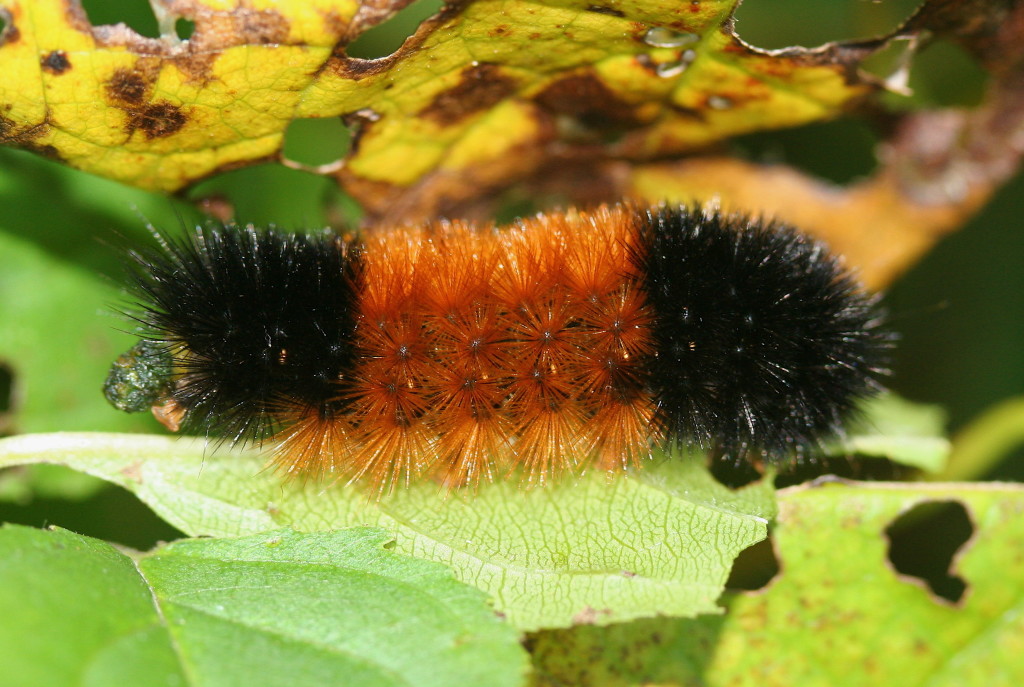
Isabella Tiger Moth caterpillars, Pyrrharctia isabella, are known as Wooly Bears. They hibernate in that stage. (IronChris / EOL; CC BY-SA 3.0)
Honeybees are an exception because they stay active in their hives. To keep from freezing, they cluster together, flutter their wings, and shiver to keep warm. The honey they stored there through the previous summer is their food and has to last until spring. On days that reach about 65°F (18°C) or higher, they may venture out in search of nectar. All about honeybees
Frogs and toads go under
Frogs hibernate underwater, lying on top of the mud at the bottom or partially buried. Wood frogs, however, are known for their ability to freeze hard as a rock and still re-animate when temperatures warm up. Toads hibernate in protected places, such as caverns, abandoned burrows, a crevice in a log, under a rock or leaf litter, or anywhere else they feel safe. Some hibernate for up to eight months.
Watch frozen wood frog awaken • All about frogs and toads
Earthworms migrate
It may be surprising to think of earthworms as migrators, but some are! They’re cold-blooded and can’t regulate their body temperature, so it’s their strategy to go south in the winter and north in mid-spring. That is if you think of south as “down” and north as “up.” They move below the frost line to avoid freezing and curl into a ball. When the soil becomes warmer, they move upward. But there are some species that always stay close to the surface and, consequently, die in the winter. In their case, they leave eggs, encased in tiny cocoons to protect them from freezing and drying, that will hatch in the spring. Watch earthworms hatch
Nightcrawlers are the largest of the migrating earthworms. They’re relatively inactive in cold soil. If the soil warms to 50–60° F (10 to 15° C) in the winter, you might see them, but they move back down when temperatures fall again. All about earthworms • Attract earthworms to your yard
Snails turn inward
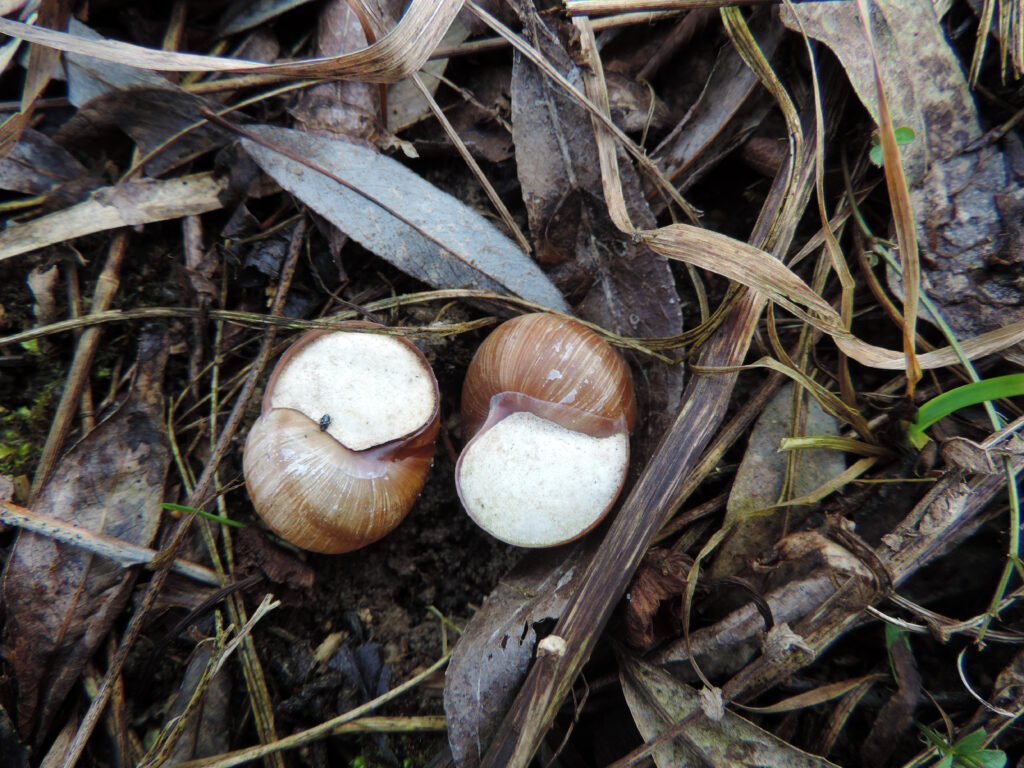
Hibernating snails seal their opening with a layer of dried mucus. (© Victoria Tucholka / Shutterstock)
Many snail species hibernate. They tuck themselves into crevices, under rocks and leaf litter, or other places where they’ll be safe from freezing temperatures. They seal the opening of their shell with mucus to keep themselves moist (drying out will kill them). Their heart slows from about thirty-six beats per minute to only three or four, and oxygen use is reduced to 1/50th of normal. Often, several will hibernate together. Snails sometimes emerge on very mild winter days. All about land snails
Spiders don’t freeze
Some spiders die in the winter after leaving behind sacs filled with eggs that defy frigid temperatures. Others spend winter as young spiderlings that hatched before winter and are clustered in their communal egg sac until spring. Some wolf spiders spend the winter as nymphs and become adults in the spring.
Tarantulas and fishing spiders, on the other hand, hibernate as adults under the bark of trees, in cellars, or any other place that protects them. Sometimes they awaken and roam around on warm winter days in search of hibernating insects to eat. Spiders that live in our houses are active year-round, even though we may not notice them. All about spiders
More reading:
Cover provides safety, shelter for wildlife
Basics of a backyard wildlife habitat

